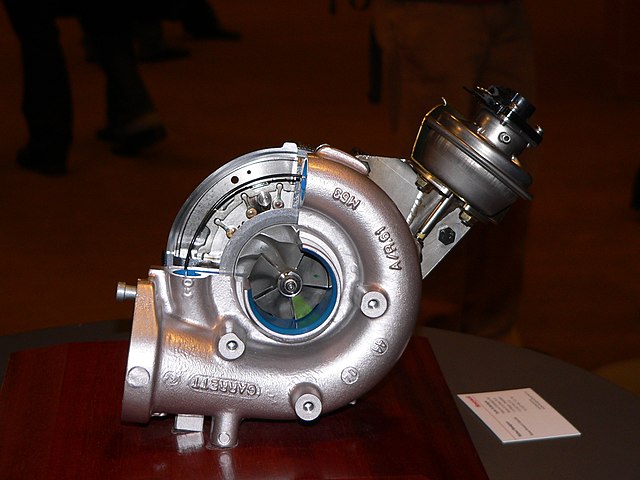Car tuning is the modification of a car to optimise it for a different set of performance requirements from those it was originally designed to meet. Most commonly this is higher engine performance and dynamic handling characteristics but cars may also be altered to provide better fuel economy, or smoother response. The goal when tuning is the improvement of a vehicle's overall performance in response to the user's needs. Often, tuning is done at the expense of emissions performance, component reliability and occupant comfort.
Nissan Silvia S14 modified for drifting
A cutaway of a turbocharger, used to increase the performance of an engine
Ford Escort modified for drag racing
Volkswagen Beetle modified for rallycross
Fuel economy in automobiles
The fuel economy of an automobile relates to the distance traveled by a vehicle and the amount of fuel consumed. Consumption can be expressed in terms of the volume of fuel to travel a distance, or the distance traveled per unit volume of fuel consumed. Since fuel consumption of vehicles is a significant factor in air pollution, and since the importation of motor fuel can be a large part of a nation's foreign trade, many countries impose requirements for fuel economy.
Fuel consumption monitor from a 2006 Honda Airwave. The displayed fuel economy is 18.1 km/L (5.5 L/100 km; 43 mpg‑US).
A Briggs and Stratton Flyer from 1916. Originally an experiment in creating a fuel-saving automobile in the United States, the vehicle weighed only 135 lb (61.2 kg) and was an adaptation of a small gasoline engine originally designed to power a bicycle.
VNT Vanes Open
2008 Monroney sticker highlights fuel economy.








